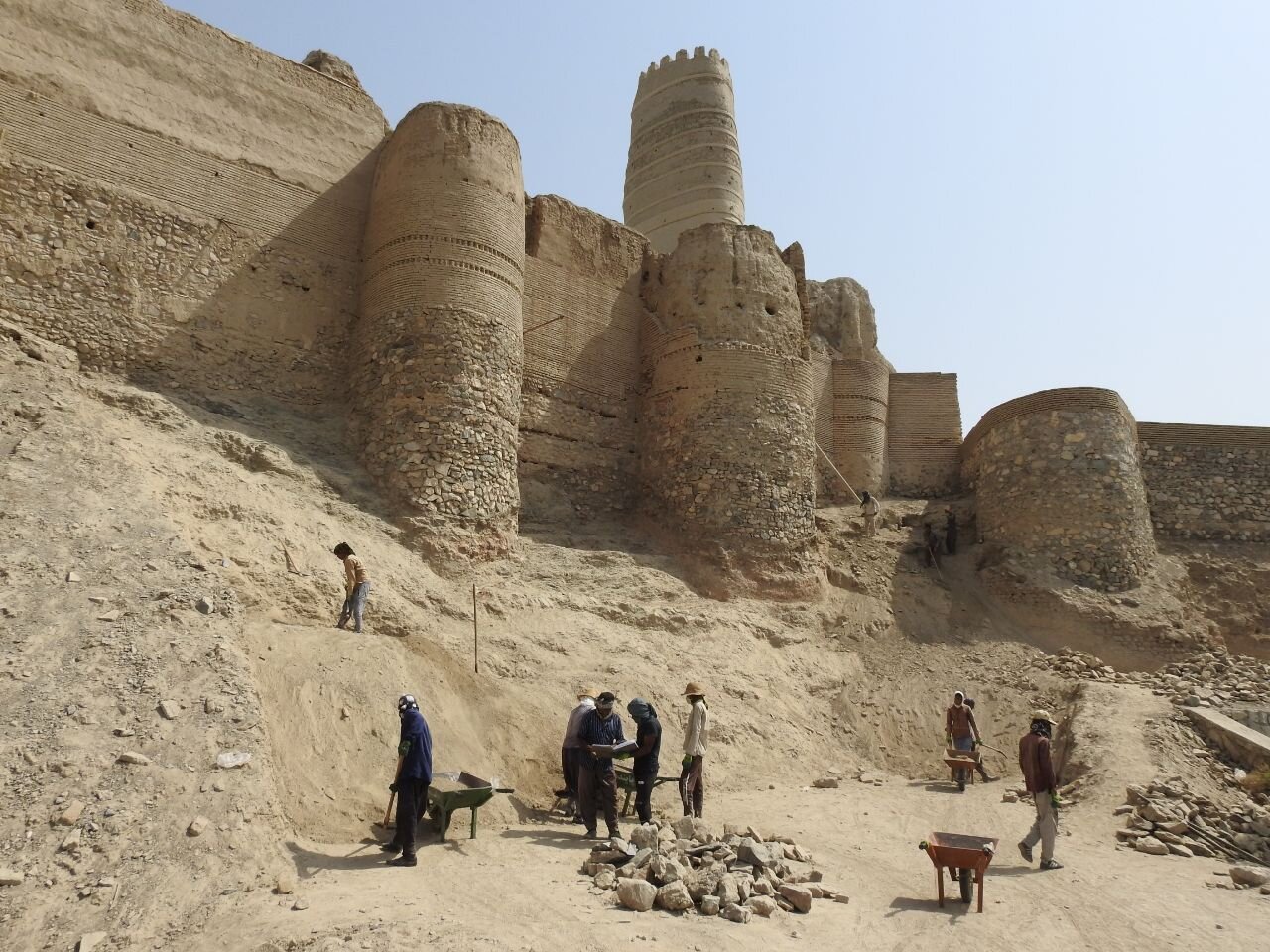Restoration of Manujan fortress in southern Iran begins

TEHRAN - Manujan Fortress, a ruined rampart believed to date from the Sassanid era in the southern Kerman province, has undergone restoration.
“The current phase of the restoration project includes using adobe and handcraft techniques, plastering, debris removal, and general cleaning of the site,” a provincial tourism official said on Sunday.
“This year, with allocated funding, restoration efforts have focused on the main tower of the fortress, the tallest structure in the complex located at its central point,” Nader Alidadi-Soleimani stated.
“It is one of the most significant landmarks in southern Kerman province,” he said.
Archaeological studies indicate that the Manujan Fortress dates back to the pre-Islamic Sasanian period. Throughout the early, middle, and late Islamic eras, the fortress served as one of the most formidable military strongholds along southern maritime routes and in central Iran.
Situated atop the highest point in Manujan city, the fortress holds a strong presence and was officially recognized as a national heritage site in 2005.
Manujan is located 430 kilometers south of Kerman, the provincial capital, and remains a significant cultural and historical site reflecting the region’s rich past.
Historical records from Iranian and Arab historians describe Manujan as a prosperous and vital city that functioned as a key trade hub connecting southern maritime commerce with northern and eastern Iran.
Previous excavations yielded a special kind of pottery as well as pieces of jewelry and glassware works that throw light on the history of the rampart.
A Sassanid archaeological landscape typically depicts a highly effective land use system and the strategic use of natural topography in the development of the earliest Sassanid cultural centers.
Sources say defensive walls have often been necessary for cities to survive in an ever-changing world of invasion and conquest. Fortresses were designed primarily to defend territories in warfare and were also used to solidify rule in a region during peacetime.
The Sassanid era saw a general renaissance in Persian art and architecture. Palaces at Ctesiphon, Firuzabad, and Sarvestan, which are among the highlights of the ensemble, are just a few examples of the grandiose proportions that architecture frequently adopted.
2018 saw the designation of "Sassanid Archaeological Landscape of Fars Region" as a UNESCO site, a collection of Sassanian historical cities in southern Iran. Eight archaeological sites make up the ensemble, which is spread across the three regions of Firuzabad, Bishapur, and Sarvestan.
Kerman province is something of a cultural melting pot, blending various regional cultures over time. It is also home to rich tourist spots and historical sites, including bazaars, mosques, caravanserais and ruins of ancient urban areas. Kerman is bounded by the provinces of Fars in the west, Yazd in the north, South Khorasan in the northeast, Sistan-Baluchestan in the east, and Hormozgan in the south. It includes the southern part of the central Iranian desert, the Dasht-e Lut.
AM
Leave a Comment